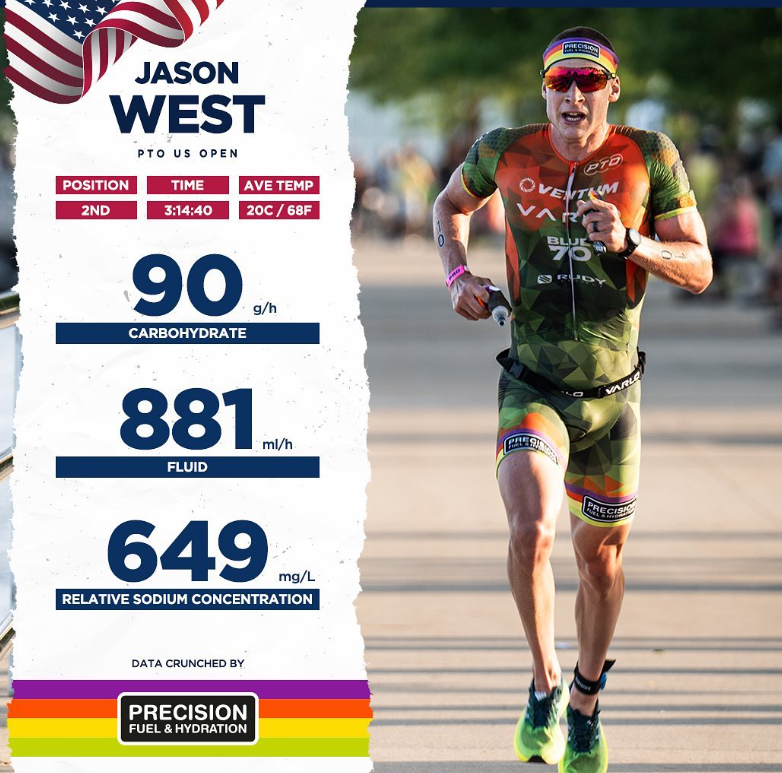While the 100km distance is still new for triathlon, USA’s Jason West is quickly becoming a master at executing near-perfect races in the PTO's T100 format.
A key piece of West’s puzzle is correctly fueling for three hours of racing; longer than an Olympic distance triathlon, but shorter than an IRONMAN 70.3. It is a subject of meticulous planning and West has every detail dialled in.
While appreciating that it will be an individual approach for each athlete, the 30-year-old shares what works for him...
Step 1: The night before
“The protocol starts the evening before where I preload by drinking 500ml of water with a PH 1500 electrolyte tablet before going to sleep. The idea is that it gives a lot of electrolyte and fluid absorption because I’m not going to pee for a long time.
Step 2: Race morning
“I repeat the process on race morning with another 1,500mg/l electrolyte tab in 500ml of water alongside my regular breakfast and coffee. Rather than gulping it down, I’ll sip on the bottle throughout the morning as I prepare for the race.”
Step 3: Pre-race
“An hour before the start, I’ll drink another 500ml bottle with the PF Carb & Electrolyte Drink Mix which delivers 60g of carbohydrates and 1,000mg of sodium. I sweat an incredible amount and so this preloading is critical for me, especially before hot races.”
Step 4: Warming-up
“I take a PF 30 Caffeine Gel (30g carbs; 100mg caffeine) within 15 minutes of the start. The timing is important as if I take it too early, I feel it can have a trough effect and my blood sugar then drops leaving me feeling sluggish for the 2km swim.”
Step 5: On the bike
“Once on the bike, I’ll take a total of 180g of carbs, which is just over 100g/h for the 80km. It’s a combination of PF Carb & Electrolyte Drink Mix and usually three PF 30 Gels, one of which has caffeine. This also gives me the right amount of sodium. I lose about 500mg/litre of sweat so drink around 3 litres of fluid in total and grab the additional water on the course at aid stations.
“It can be tougher to fuel on the bike, depending on how many aid stations there are and where they are situated. It might also be time to take a gel and it is full-on at the front of the race. I know at 10m minutes, 40m minutes, 70 minutes and 100 minutes into the ride, it’s time to fuel, but try not to stress if it’s not spaced out evenly. The most important element is just to get it in.”

Step 6: On the run
“I’ll take three more gels on the run, including one caffeinated gel. I space them out, but make sure they're taken early enough as there's probably not enough time to absorb anything in the final 5km. In Milwaukee in 2023, I took gels at 6km and 12km, but also had some carb drink, meaning I could hit the same 90g but in a different way.
“The positive element to fueling on the run is that I feel more in control of what I’m doing compared to the bike, where it can be more stressful to get fuel in due to course layouts and race dynamics.”
Step 7: Be flexible
“While I have a set plan it still needs to be refined depending on the conditions. If it’s a hot race, I may carry a small flask with water and electrolytes for the run to make sure I’m getting enough fluid. This year I may also experiment with trying to take on a slightly higher number of carbs on the bike leg.”
